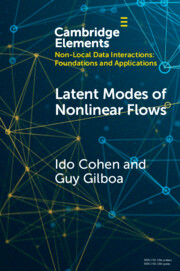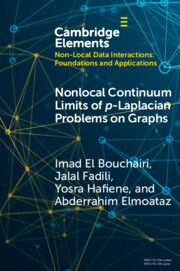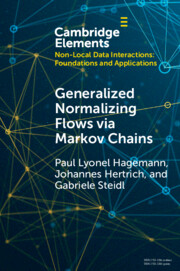Refine search
Actions for selected content:
2540 results in Computational Science
1 - Idiomatic Python
-
- Book:
- Numerical Methods in Physics with Python
- Published online:
- 30 August 2023
- Print publication:
- 20 July 2023, pp 1-30
-
- Chapter
-
- You have access
- Export citation
Appendix B - Number Representations
-
- Book:
- Numerical Methods in Physics with Python
- Published online:
- 30 August 2023
- Print publication:
- 20 July 2023, pp 658-663
-
- Chapter
- Export citation
Frontmatter
-
- Book:
- Numerical Methods in Physics with Python
- Published online:
- 30 August 2023
- Print publication:
- 20 July 2023, pp i-vi
-
- Chapter
- Export citation
Appendix C - Math Background
-
- Book:
- Numerical Methods in Physics with Python
- Published online:
- 30 August 2023
- Print publication:
- 20 July 2023, pp 664-670
-
- Chapter
- Export citation
Index
-
- Book:
- Numerical Methods in Physics with Python
- Published online:
- 30 August 2023
- Print publication:
- 20 July 2023, pp 677-688
-
- Chapter
- Export citation
Dedication
-
- Book:
- Numerical Methods in Physics with Python
- Published online:
- 30 August 2023
- Print publication:
- 20 July 2023, pp vii-viii
-
- Chapter
- Export citation

Latent Modes of Nonlinear Flows
- A Koopman Theory Analysis
-
- Published online:
- 31 May 2023
- Print publication:
- 29 June 2023
-
- Element
- Export citation

Nonlocal Continuum Limits of p-Laplacian Problems on Graphs
-
- Published online:
- 13 April 2023
- Print publication:
- 11 May 2023
-
- Element
- Export citation

Generalized Normalizing Flows via Markov Chains
-
- Published online:
- 19 January 2023
- Print publication:
- 02 February 2023
-
- Element
- Export citation
4 - Optimization Landscape of Neural Networks
-
-
- Book:
- Mathematical Aspects of Deep Learning
- Published online:
- 29 November 2022
- Print publication:
- 22 December 2022, pp 200-228
-
- Chapter
- Export citation
5 - Explaining the Decisions of Convolutional and Recurrent Neural Networks
-
-
- Book:
- Mathematical Aspects of Deep Learning
- Published online:
- 29 November 2022
- Print publication:
- 22 December 2022, pp 229-266
-
- Chapter
- Export citation
7 - Deep Learning as Sparsity-Enforcing Algorithms
-
-
- Book:
- Mathematical Aspects of Deep Learning
- Published online:
- 29 November 2022
- Print publication:
- 22 December 2022, pp 314-337
-
- Chapter
- Export citation
2 - Generalization in Deep Learning
-
-
- Book:
- Mathematical Aspects of Deep Learning
- Published online:
- 29 November 2022
- Print publication:
- 22 December 2022, pp 112-148
-
- Chapter
- Export citation
10 - Dynamical Systems andOptimal Control Approach to Deep Learning
-
-
- Book:
- Mathematical Aspects of Deep Learning
- Published online:
- 29 November 2022
- Print publication:
- 22 December 2022, pp 422-438
-
- Chapter
- Export citation
6 - Stochastic Feedforward Neural Networks: Universal Approximation
-
-
- Book:
- Mathematical Aspects of Deep Learning
- Published online:
- 29 November 2022
- Print publication:
- 22 December 2022, pp 267-313
-
- Chapter
- Export citation
9 - Deep Generative Models and Inverse Problems
-
-
- Book:
- Mathematical Aspects of Deep Learning
- Published online:
- 29 November 2022
- Print publication:
- 22 December 2022, pp 400-421
-
- Chapter
- Export citation
1 - The Modern Mathematics of Deep Learning
-
-
- Book:
- Mathematical Aspects of Deep Learning
- Published online:
- 29 November 2022
- Print publication:
- 22 December 2022, pp 1-111
-
- Chapter
- Export citation
Contents
-
- Book:
- Mathematical Aspects of Deep Learning
- Published online:
- 29 November 2022
- Print publication:
- 22 December 2022, pp v-xii
-
- Chapter
- Export citation
Preface
-
- Book:
- Mathematical Aspects of Deep Learning
- Published online:
- 29 November 2022
- Print publication:
- 22 December 2022, pp xv-xviii
-
- Chapter
- Export citation
8 - The Scattering Transform
-
-
- Book:
- Mathematical Aspects of Deep Learning
- Published online:
- 29 November 2022
- Print publication:
- 22 December 2022, pp 338-399
-
- Chapter
- Export citation
